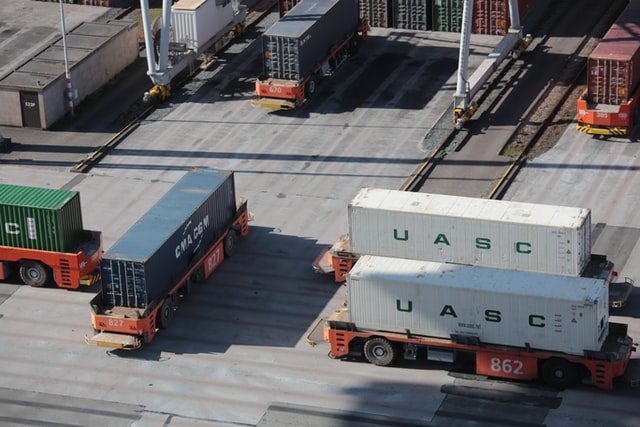Since Amazon (NASDAQ: AMZN) now owns a huge piece of the U.S. economy, one of the best ways to gauge America’s economic health is to check the Everything Store’s financial numbers for 4th Quarter 2017.
Strangely enough, the financial numbers revealed by Amazon’s own 4th quarter earnings slide show were not as great as either its detractors or boosters have been telling us. The ecommerce giant does not seem to be as healthy as those who fear it believe Amazon to be.
Our friends over at Seeking Alpha were gracious enough to post some slides from Amazon’s 1 February 2018 Earnings call online. Here is what I learned from the Amazon Slide Show:
Amazon has Less Cash
-
Amazon has less cash than it had in 2016. The free cash flow was down by 20%, falling from $10.536 billion (€8.53 billion)in December 2016 to $8.376 billion (€6.78 billion) in 2017.
-
When lease principal repayments were subtracted the free cash flow was worse. Nearly half of the free cash flow (48%) might be eaten by leases. When lease payments were subtracted the free cash flow fell to $3.377 billion in 4th Quarter 2017.
-
When assets acquired through capital leases were added Amazon had a negative free cash flow of -$1.461 billion (*€1.18 billion).
-
Adding the capital asset leases means Amazon’s free cash flow fell by $6.145 billion (€4.98 billion) between December 2016 and the end of 2017. When capital asset leases are added to the mix, Amazon had a free cash flow of $4.684 billion (€3.79 billion) in 4th Quarter 2016 and -$1.461 billion (*€1.18 billion)a year later.
My conclusion is that all the spending on new fulfillment center, Whole Foods, Amazon Go, movies, movie studios, etc. is seriously degrading Amazon’s cash flow. One has to wonder how long Jeff Bezos’ breakneck expansion can go onto until he runs out of cash. That might be occurring right now.
Amazon’s Sales are Booming
The sales figures justify the spending and the degrading of the cash flow.
-
Quarterly net sales increased from $43.741 billion (€35.43 billion)in 4th Quarter 2016 to $60.453 billion (€48.97 billion) a year later. That indicates an increase of $16.712 billion (€13.54 billion) in a year.
-
Yearly net sales rose to an incredible $177.866 billion (€144.08 billion) in 4th quarter 2017. That was a 31% increase from yearly net sales of $135.987 billion (€110.15 billion) just one year earlier. If those figures are accurate yearly net sales increased by $41.879 billion (€33.92 billion).
-
Most of those net sales (60%) come from North America. Amazon’s yearly North American net sales came to $106.110 billion (€85.95 billion) in the 2017 4th Quarter. This means that Amazon is still largely an American company and its international marketing efforts have not been as successful as we have been led to believe.
-
Amazon’s business is capable of generating more income, but that income is severely limited. Amazon reported an operating income of $2.127 billion (€1.72 billion) in 4th Quarter 2017. That was a 69% increase from $1.255 billion (€1.02 billion) a year earlier. This seems very small given the incredible size and scope of Amazon’s ecosystem.
-
Net income (the money Amazon actually made) is worse. Amazon reported just $1.856 billion (€1.50 billion) in net income in 4th Quarter 2017. That was a healthy 148% increase from $749 million (€606.72 million) a year earlier, but small. Amazon reported a net income of $749 million (€606.72 million) in 4th Quarter 2017.
-
Amazon Web Services (AWS) did well it generated $5.113 billion in net sales and $1.354 billion in operating income in 4th Quarter 2017.
My conclusion from these small figures is that Amazon’s business might not be sustainable because its ability to generate cash is limited. The ecommerce sales are not generating enough float to make Amazon a value investment.
I would also conclude that Amazon Web Services is propping up the rest of the company. Bezos seems to be using it to finance his other activities. That means he cannot afford to sell it.
A bothersome deduction here is that Amazon might be closer to collapsing than some of us believe. I have to wonder what would happen to the Everything Store if it were faced with a sudden economic downturn in the US, or a sudden drop in sales.
Amazon Shareholders Beware
A major problem Bezos will face here is Amazon’s dependence on the U.S. economy. If the current recovery does not work it, Amazon might face serious losses and Bezos will have to trim his operations.
A prudent piece of advice for Jeff Bezos right now would be to slow or stop the expansion, and wait for the cash to keep up with the expenses. Anybody that owns Amazon stock would be well advised to sell it now.
My guess is that we’ll never see Amazon at prices like the $1,397.67 (€1,132.17) a share reported on 6 February 2017, again. Instead, the Everything Store’s share price is heading for a drastic fall soon.
This market commentary originally appeared at Market Mad House please honor us with a visit.









